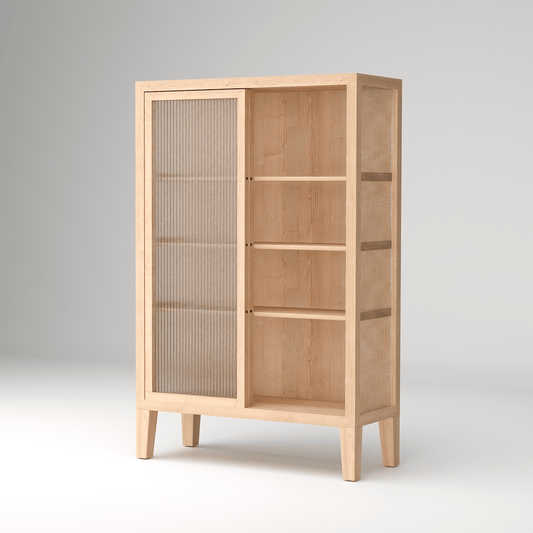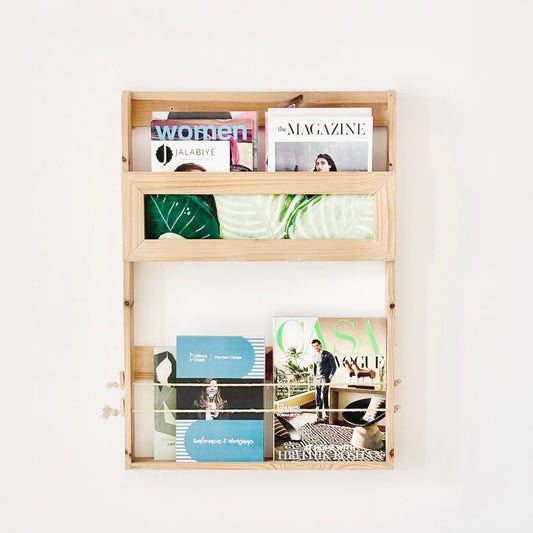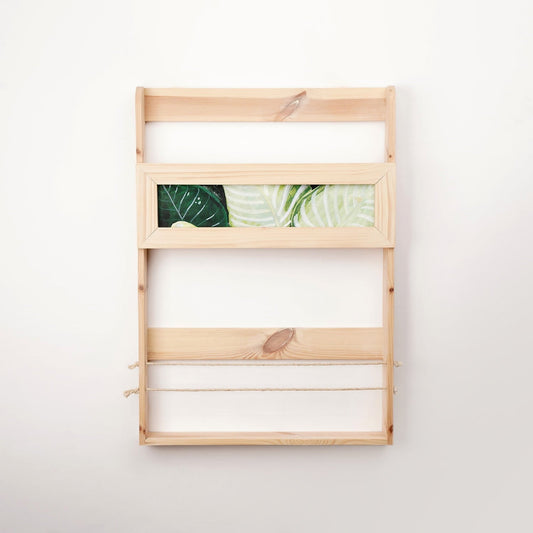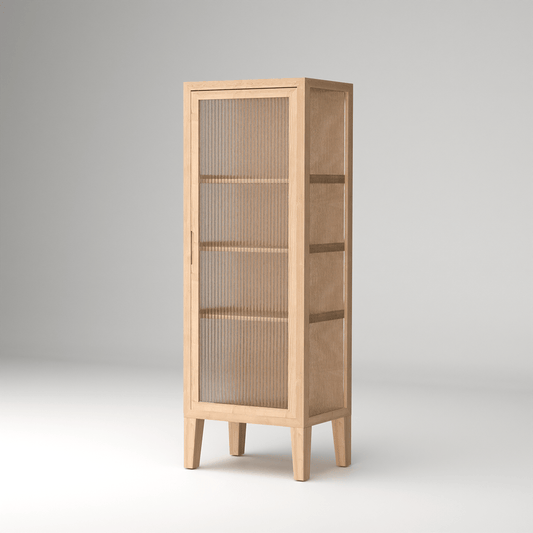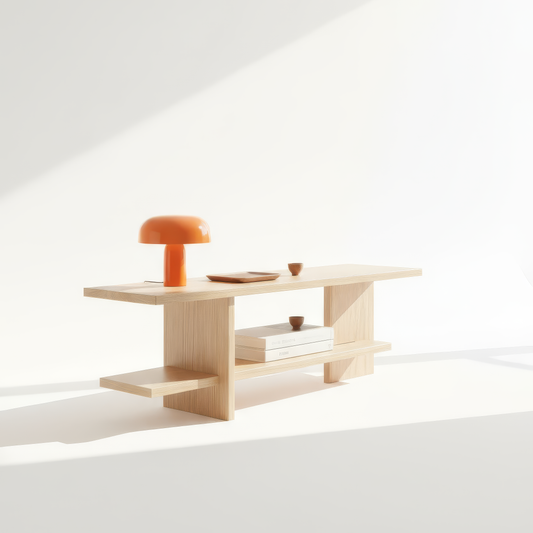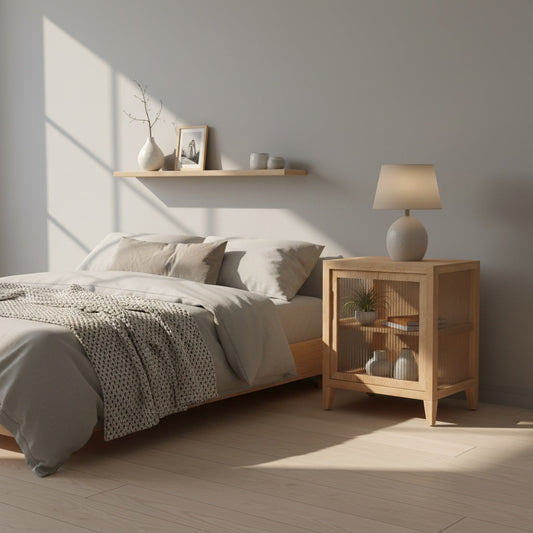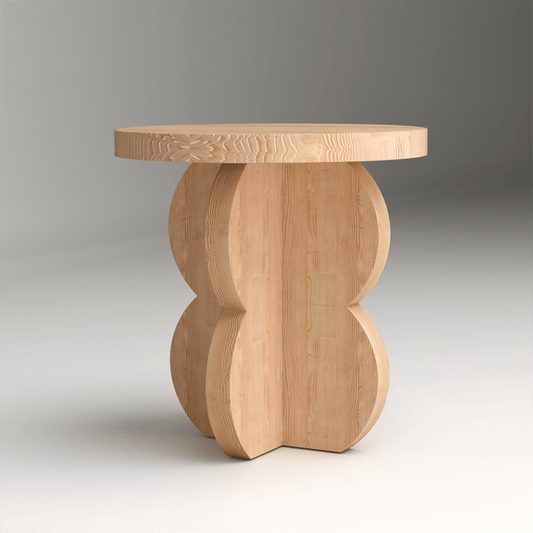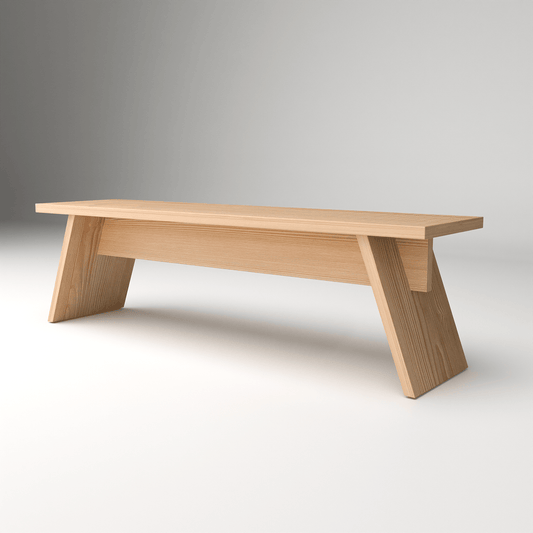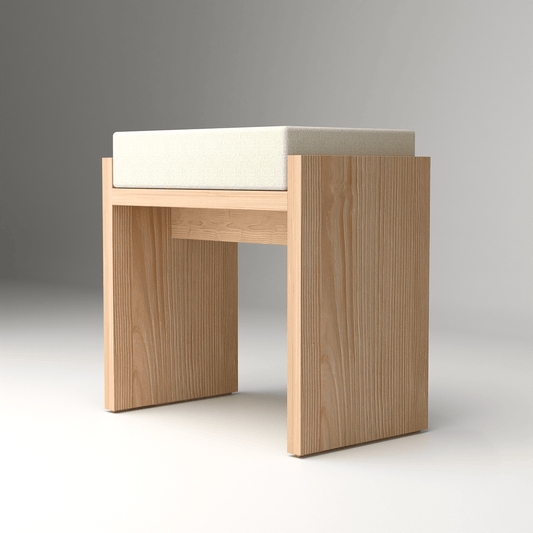The convergence of Scandinavian and Japanese design philosophies has created some of the most compelling furniture of our time. This fusion represents more than just aesthetic appeal; it embodies a shared commitment to craftsmanship, natural materials, and the belief that beautiful objects should serve meaningful purposes in daily life. Scandinavian-Japanese fusion furniture demonstrates how two distinct cultural approaches to design can create something entirely new while honoring both traditions.
Understanding the Design Heritage
Scandinavian Design DNA
Scandinavian design emerged from the Nordic countries' long winters and the need to create warm, functional spaces using limited resources. This tradition emphasizes clean lines, natural materials, and the concept of democratic design - beautiful, functional objects accessible to everyone.
Japanese Design Philosophy
Japanese design philosophy centers on the appreciation of natural materials, the beauty of simplicity, and the concept of mono no aware - the bittersweet awareness of the impermanence of all things. This tradition values craftsmanship, natural aging, and the harmony between objects and their environment.
The Fusion Advantage
Shared Values: Both traditions prioritize natural materials, honest construction, and functional beauty Complementary Strengths: Scandinavian warmth balances Japanese restraint Modern Relevance:Combined principles address contemporary needs for sustainable, meaningful design Universal Appeal:Aesthetics that transcend cultural boundaries while respecting origins
Key Characteristics of Fusion Furniture
Material Harmony
Natural Wood Priority: Both traditions celebrate timber's inherent beauty and versatility Honest Construction: Joinery and assembly methods that become part of the aesthetic Sustainable Sourcing:Commitment to environmentally responsible material selection Aging Gracefully: Materials chosen for how they develop character over time
The Nordic Fluted Glass Cabinet in Pinewood at ₹37,900 to ₹47,000 perfectly exemplifies this fusion, combining Scandinavian fluted glass techniques with Japanese appreciation for natural pine wood, creating storage that serves both display and concealment needs.
Form Language
Clean Geometric Lines: Simple shapes that feel both modern and timeless Horizontal Emphasis: Low profiles that create calm, grounded feelings Negative Space Appreciation: Design that values what's not there as much as what is Proportional Harmony: Sizing that feels right in human-scaled spaces
Functional Philosophy
Multi-Purpose Design: Furniture that serves multiple needs without compromise User-Centered Thinking:Design that prioritizes human comfort and usability Maintenance Simplicity: Pieces that remain beautiful with minimal care Adaptability: Furniture that works in various settings and configurations
Room-Specific Fusion Applications
Living Room Centerpieces
Coffee Tables: Low surfaces that facilitate gathering while providing storage Seating Systems:Comfortable furniture that maintains visual lightness Storage Solutions: Organization that preserves clean aesthetics Entertainment Centers: Media storage that integrates technology discretely
Bedroom Serenity
Platform Beds: Sleeping surfaces that emphasize horizontal calm Bedside Storage: Functional pieces that support sleep routines Wardrobe Systems: Clothing storage that maintains bedroom tranquility Seating Options: Comfortable spots for dressing and contemplation
The Solid Pine Wood Nightstand - SOMA at ₹34,500 demonstrates fusion principles through its solid pine construction and clean geometric form, providing bedside storage that feels both Scandinavian in its functionality and Japanese in its restraint.
Kitchen and Dining Integration
Dining Tables: Surfaces that facilitate mindful eating and gathering Storage Cabinets: Organization that keeps essentials accessible but hidden Work Surfaces: Preparation areas that support culinary creativity Seating Solutions: Chairs that provide comfort while maintaining clean aesthetics
Home Office Harmony
Desk Design: Work surfaces that promote focus and productivity Storage Systems: Organization that maintains mental clarity Seating Comfort: Chairs that support long work sessions Technology Integration:Furniture that accommodates modern needs discretely
Construction Techniques in Fusion Furniture
Traditional Joinery Methods
Mortise and Tenon: Strong, honest connections that become part of the beauty Dovetail Joints: Precise craftsmanship that demonstrates maker skill Finger Joints: Efficient connections that create interesting visual patterns Wedged Joints: Traditional methods that allow for natural wood movement
Modern Manufacturing Integration
Precision Cutting: Technology that enhances rather than replaces craftsmanship Quality Control:Consistent standards that maintain traditional quality Sustainable Production: Manufacturing methods that minimize environmental impact Scalable Craftsmanship: Techniques that make quality accessible to more people
Hardware Philosophy
Minimal Metal Use: Hardware that serves function without dominating aesthetics Quality Materials: Brass, steel, and other metals that age beautifully Hidden Mechanisms: Functional elements that don't disrupt visual simplicity Smooth Operation: Hardware that functions quietly and reliably
Color and Finish Philosophy
Natural Wood Finishes
Oil Treatments: Finishes that enhance grain while allowing wood to breathe Wax Applications: Traditional treatments that can be renewed and maintained Natural Aging: Allowing wood to develop patina through use and time Consistent Application: Finishes that look intentional rather than industrial
Color Palette Integration
Wood Tone Harmony: Colors that complement rather than compete with natural timber Neutral Foundations: Whites, grays, and creams that support wood beauty Accent Color Restraint: Limited color use that doesn't overwhelm natural materials Seasonal Adaptation: Colors that work with changing light and seasonal moods
Textile Integration in Fusion Furniture
Natural Fiber Priority
Linen Upholstery: Breathable fabrics that age beautifully Wool Elements: Natural insulation that adds warmth and texture Cotton Comfort: Versatile materials that work in all seasons Hemp Durability:Sustainable fibers that become softer with use
Pattern and Texture Philosophy
Texture Over Pattern: Interesting weaves rather than busy designs Natural Color Variations: Embracing the subtle differences in natural fibers Seasonal Rotation: Changing textiles to reflect natural cycles Maintenance Simplicity: Fabrics that clean easily and maintain beauty
Technology Integration Without Compromise
Hidden Technology Solutions
Built-in Charging: Power solutions integrated into furniture design Cable Management: Wire organization that maintains clean aesthetics Device Storage: Compartments for technology that keep it accessible but hidden Wireless Integration: Reducing cord clutter through wireless solutions
Smart Furniture Features
Adjustable Elements: Furniture that adapts to different uses and preferences Automated Functions:Features that enhance convenience without visual complexity App Integration: Digital control that doesn't compromise aesthetic simplicity Energy Efficiency: Smart features that support environmental responsibility
Maintenance and Longevity
Care Philosophy
Gentle Maintenance: Methods that preserve rather than strip natural finishes Regular Attention: Consistent care that prevents major problems Natural Product Use: Cleaning solutions that don't compromise materials Professional Restoration: When to seek expert help for valuable pieces
Long-Term Value
Durability Investment: Choosing pieces built to last decades Timeless Design: Avoiding trendy elements that quickly become dated Repair Capability: Selecting furniture that can be maintained and restored Emotional Connection: Pieces that become more meaningful over time
Customization and Personalization
Adaptive Design
Size Variations: Standard designs available in multiple dimensions Finish Options: Different wood treatments to suit individual preferences Hardware Choices: Metal finishes that complement personal style Configuration Flexibility: Modular systems that adapt to different spaces
Personal Expression Within Restraint
Subtle Customization: Personal touches that don't compromise design integrity Cultural Adaptation:Modifications that reflect individual heritage Functional Adjustments: Changes that better serve specific lifestyle needs Evolution Planning: Designs that can grow and change with users
Sustainability in Fusion Furniture
Environmental Responsibility
Sustainable Wood Sources: Timber from responsibly managed forests Local Material Priority: Reducing transportation environmental impact Waste Minimization: Production methods that generate minimal waste End-of-Life Planning: Furniture designed for recycling or repurposing
Social Responsibility
Fair Labor Practices: Supporting makers who receive fair compensation Skill Preservation: Maintaining traditional craftsmanship knowledge Community Support: Choosing furniture that supports local economies Cultural Respect: Honoring the traditions that inform design choices
Budget Approaches to Fusion Furniture
Investment Strategy
Key Pieces Priority: Starting with furniture that anchors spaces Quality Foundation: Choosing well-made pieces that last decades Gradual Building: Developing furniture collections over time Professional Guidance: When to seek expert advice for major purchases
Value Optimization
Multi-Function Priority: Choosing pieces that serve multiple purposes Timeless Design: Avoiding trendy elements that quickly become outdated Local Artisan Support: Finding skilled makers in your area Maintenance Learning: Developing skills to care for quality pieces
Cultural Sensitivity and Authenticity
Respectful Fusion
Understanding Origins: Learning about both design traditions Authentic Integration: Using principles rather than copying specific cultural objects Supporting Traditional Makers: Choosing pieces from artisans who understand the traditions Personal Interpretation: Making fusion work for individual cultural contexts
Modern Relevance
Contemporary Needs: Applying traditional principles to modern living requirements Technology Balance:Integrating necessary modern conveniences thoughtfully Family Life Considerations: Creating fusion furniture that works for households Cultural Evolution: Allowing traditions to grow and adapt naturally
The Future of Fusion Furniture
Emerging Trends
Sustainable Innovation: New materials and methods that honor traditional values Technology Integration:Smart features that enhance rather than dominate Customization Accessibility: Making personalized furniture more available Global Collaboration: International cooperation that respects cultural origins
Continuing Evolution
Design Development: How fusion principles continue to evolve Material Innovation: New sustainable materials that serve traditional aesthetics Manufacturing Advancement: Technology that enhances rather than replaces craftsmanship Cultural Exchange: Ongoing dialogue between design traditions
Creating Your Fusion Furniture Collection
Scandinavian-Japanese fusion furniture represents more than a design trend; it embodies a philosophy that values both beauty and function, tradition and innovation. By choosing pieces that honor both cultural traditions while serving contemporary needs, you create living spaces that feel both timeless and thoroughly modern.
The key to successful fusion furniture selection lies in understanding the principles that drive both traditions: respect for materials, commitment to craftsmanship, and the belief that beautiful objects should enhance daily life. Whether you start with a single statement piece or gradually build a comprehensive collection, fusion furniture offers a pathway to creating homes that reflect both global design wisdom and personal values.



